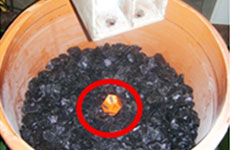
Categories
Publications
NEOBALLAST: Seeking the ballast of the future
18/5/2016

Maintenance costs on ballasted tracks have increased significantly in recent decades as a result of increased commercial speeds, a recent example being the high-speed-line (HSL) Paris-Strasbourg went from a speed of 300 km/h to 320 km/h. Such innovations require that the geometric track quality be optimal, so as to meet the necessary safety standards.
In Spain the cost of maintenance for HSL is around € 100,000 per km/year[1], and taking into consideration that it is the country with the greatest length of high-speed tracks in Europe (more than 3,100 km in service), there is great interest in finding new ways to help reduce the costs associated with the rail infrastructure.
The high frequency maintenance required for the ballast, the difficulty of obtaining high quality aggregates depending on the area of action, and the problems associated with the vibrations induced by passing trains reveal that innovations related to the ballast layer are essentials to accompany the progress made in the quality of rail services.
In this regard and using recyclable materials it is possible to obtain real solutions to the existing problems which in turn contribute to a reduction in waste.
Download paper »


